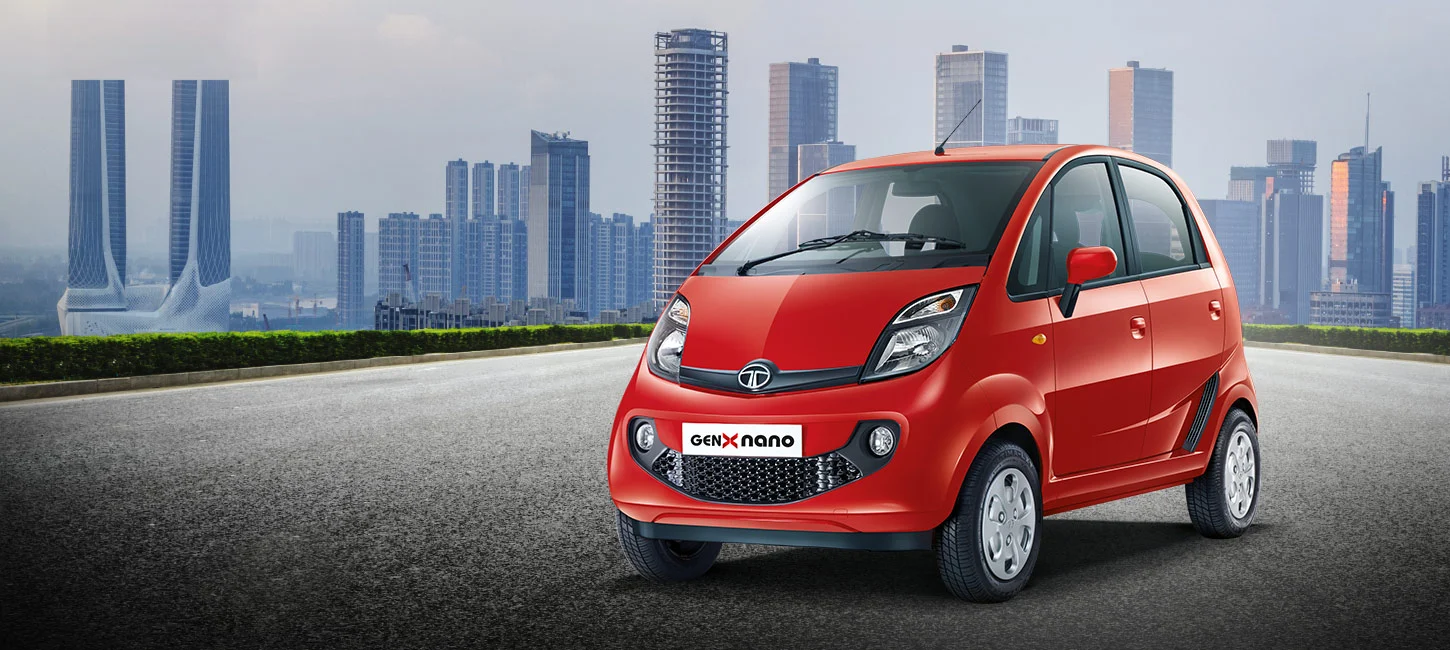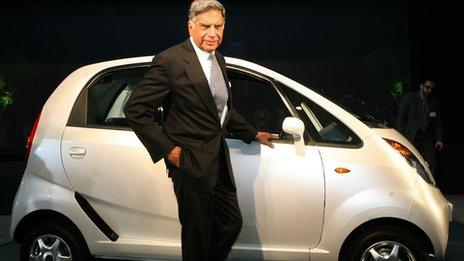Published
2 years agoon

The hatchback known as the Tata Nano was created and released by Indian carmaker Tata Motors. Their major market for launch was India, where a modest compact car with a dispatch price of INR 100,000 ($2,500) was expected to appeal to current bike riders.
The Tata Group is a multinational corporation with headquarters in Mumbai, Maharashtra, India. Founded in 1868 by Jamshedji Tata, the organisation attained global notoriety through the acquisition of numerous foreign corporations. It is owned by Tata Sons, a charity that is registered with the Charity Commissioner of India, and is the biggest conglomerate in India.
Under the direction of its board of directors and shareholders, each Tata firm or company runs independently.
As of March 2017, Tata had 30 listed firms with a total market value of about US$ 130 billion. One of Tata’s major corporations is Titan, which also owns Tata Steel, Tata Motors, Tata Consulting Services, Tata Energy, Tata Chemicals, Tata International Beverages, Tata Telefares, Crown Group, and Tata Communications.

Mr. Ratan Tata had the concept for the Tata Nano. On a wet day, he was travelling when he witnessed a man riding a bike while toting his entire family of four. Mr. Ratan Tata observed that the man was facing a lot of difficulty riding his motorcycle because it was pouring and it was heavy.
This incident gave Mr. Ratan Tata the idea to make a car that was economical and big enough for small families to ride motorcycles.
His initial objective was to create a safer motorbike. He designed two-wheeled bicycles and one with a safety cage around it, but none of them appeared practical. He even considered building a car without doors and using safety bars in their place, but nobody would want to purchase a half-car.
He finally succeeded with an automobile that merely contained the necessities after numerous design failures.
After a few days of planning and investigation, he discovered that the cost of producing this car is approximately Rs. 1 lakh. Mr. Ratan Tata was accused numerous times of producing the most cheapest car in the world, but he persisted with his plan.
Together, a group of engineers dreamed up the name Nano, a vehicle that complied with all automobile safety regulations.
Due to early instances of the Nano catching fire, Tata had a difficult time attracting Indian customers. This is why one of the main reasons why Tata Nano failed was the perception that the car was dangerous because of the quality sacrifice made to reduce costs.
Every year, Tata Motors was supposed to distribute 250,000 Nanos. This, however, did not take place. Instead, just 7591 units were sold in the 2016–17 fiscal year. In 2017, Tata Motors declared that assembly would continue due to Tata’s concern for the undertaking.
A large fraction of India’s population continues to live in low-wage households. For many people in India, owning a car is still a dream. Ratan Tata announced the arrival of its vehicle nouvelle in 2008, igniting a brand-new sector of the car industry. He gave the car the name “1 lakh rupee vehicle” and advertised it under that name.
Ratan Tata stayed faithful to setting the Nano on the roads, and he did so by July 2009. The requests for the car were first astronomical, but they gradually decreased month after month. Tata’s inability to draw customers was primarily due to the vehicle’s marketing strategy. But how could the marketing possibly have gone wrong?

Nano marketed itself as the most affordable car. Nobody enjoys driving a “cheap” automobile. Tata launched this vehicle with the purpose of attracting low-wage workers and their families, but despite its impassioned motivation, the car is viewed in the public eye as promoting segregation. Additionally, the usage of terms like “cheap” and “lakhtakia” in promos and commercials damaged its reputation.
Additionally, the engine had a problem. As was previously indicated, the engine malfunction caused the car to catch fire. In addition, there was media speculation about what would happen if Nano becomes popular. It might imply a decline in the used automobile market.
Tata Nano concentrated on people with modest incomes who had never considered purchasing a car. However, this increased some of the opposition. According to the target audience, the media, then the entire public, painted the Tata Nano as a vehicle for the underprivileged.
Indian Government’s Crackdown on Social Media: A Threat to Free Speech


Report: Byju’s Investors To Vote On Ousting Byju’s Board


NeoGrowth continues its growth streak in Q3, reports 51% jump in AssetsUnder Management to INR 2456 crore with double-digit Return on Equity


PayNearby launches Digital Naari platform to generate sustainable self-employment for women across Bharat


The Simpsons did it again! This time foreseeing Apple’s latest technological innovation – The Apple Vision Pro


Dilip Venkatraman was promoted to SVP and business head for Media and Entertainment at Tech Mahindra

